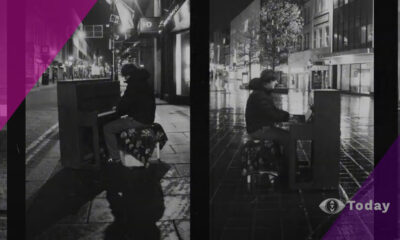The Centre des monuments nationaux is currently hosting the exhibition until September…
2024 will see France host both the Olympic Games (26 July – 11 August) and the Paralympic Games (28 August – 8 September), in Paris, for the first time in 100 years, and the Centre des monuments nationaux wanted to highlight the history of the fight for emancipation and equality as part of its programme of events for the Cultural Olympiad.
The Paralympic History exhibition at the Panthéon, the burial place of leading figures whose commitment to the French nation or whose defence of the values of the French republic is seen to deserve official recognition from their country, looks at those who, through their roles within the Paralympic movement, have shaped a history based on pride in difference and demands for a more inclusive society. The Paralympic History exhibition is a tribute to various great men and women, notably including Louis Braille, the inventor of the tactile writing system, who was inducted into the Panthéon in 1952.
The Paralympic Games were first held in the mid-20th century and have gone from strength to strength, changing the way we see and think about people with disabilities. The CMN has chosen to dedicate an extraordinary exhibition to the history of this militant movement, combining archives, posters, photographs, sports equipment, artefacts and audiovisual documents, the aim being to highlight the gradual integration of athletes with a variety of disabilities, on the one hand, and the changes in the discourse, images and materials associated with competitive sport, on the other.
The exhibition will be organised chronologically and showcase four key periods:
1948-1960: The “hospital” games were organised at Stoke Mandeville Hospital in the UK, where Dr Ludwig Guttmann initiated the movement with an innovative experiment to promote rehabilitative sport: a “Sports Day” archery competition on 29 July 1948, the opening day of the London Olympic Games.
The French Sports Association for People with Disabilities (Amicale sportive des mutilés de France, ASMF) took part in these Games for the first time in 1955, a year after its creation within the “Rhine and Danube” war veterans’ club. Most of the Amicale’s founders were amputees. Up until 1960, the “Stoke Games” were an increasingly important international meeting aimed exclusively at wheelchair users.
1960-1989: The first “Para-Olympic” Games, held in Rome in 1960, were reserved for wheelchair users with spinal cord injuries, but amputees, followed by blind and partially-sighted people (1976 Toronto Games), were also gradually allowed to officially participate. It wasn’t until 1984 and the New York Games, however, that athletes with cerebral palsy were included. The creation of the International Paralympic Committee (IPC) in 1989 indicated a desire to finally bring together all forms of disability.
1989-2012: The dawn of a third period heralds the emergence of a new Paralympism seeking to broaden its scope and bring together all international sports federations representing athletes with different types of impairments and dis/abilities, opening the door to deaf athletes and those with intellectual disabilities.
New imaginative worlds and new Paralympic figures emerge, such as the “Paralympian technological hybrid” (superhuman hyper-performer). The history of the Paralympic movement and its Games is therefore also a history of the bringing of unique athletes together; a history of constant encounters, adaptations, ingenuity and innovation, creating the conditions for fairness in competitions involving athletes with extremely diverse dis/abilities.
Since 2012: The London 2012 Games marked a tipping point towards a major demonstration of inclusion and pride, with the media seizing the opportunity presented by the Paralympic Games to showcase sporting performances of an unprecedented kind under the slogan “Meet the Superhumans”. These Games would also see the reintegration of athletes with an intellectual disability in three sports, namely swimming, table tennis and athletics, while the Tokyo 2021 Games saw the appearance of new para-sports in the form of para-badminton and para-taekwondo, as well as the emergence of new Paralympic figures such as Terezinha Guilhermina and Marie-Amélie Le Fur, who competes with a Flex-Foot.
The evolution of Paralympic mascots henceforth reveals the possibility of displaying sports prostheses with pride.
Paralympic History: From Integration in Sport to Social Inclusion (1948-2024) at the Panthéon, Paris running now through to September 29th.











